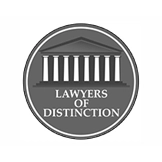Slip and fall accidents in California restaurants can lead to serious injuries, such as fractures, sprains, or head trauma, often due to hazardous conditions like spilled food or wet floors. These incidents can occur in dining areas, restrooms, or parking lots, and holding restaurant owners accountable requires proving negligence. Understanding the common causes of these accidents, the legal responsibilities of restaurant owners, and potential case outcomes is essential for pursuing compensation. This article explores frequent causes of slip and fall accidents in restaurants, key legal considerations, example cases, and steps to protect your rights.
Common Causes of Slip and Fall Accidents in Restaurants
Restaurants are busy environments where hazards can easily lead to slip and fall accidents. Common causes include:
- Spilled Food or Drinks: Dropped food, spilled beverages, or grease on dining room or kitchen floors can create slippery surfaces, especially if not promptly cleaned.
- Wet Floors: Mopped floors, leaks from equipment, or tracked-in rainwater in entryways can cause slips, particularly without warning signs.
- Uneven or Damaged Flooring: Worn carpets, loose tiles, or uneven transitions between flooring types in dining areas or restrooms can lead to trips and falls.
- Cluttered Walkways or Poor Lighting: Crowded pathways with chairs, bags, or debris, combined with dim lighting in dining areas or parking lots, can obscure hazards.
Restaurant owners and managers are responsible for regularly inspecting and maintaining their premises to ensure customer and employee safety.
Legal Considerations in Restaurant Slip and Fall Claims
To succeed in a slip and fall claim against a California restaurant, you must prove the owner or manager was negligent. Key legal considerations include:
- Duty of Care: Restaurant owners have a legal obligation to maintain safe premises for customers and staff, including promptly addressing spills or other hazards.
- Proving Negligence: You must show the owner knew or should have known about the hazard (e.g., a spill left unattended for an extended period) and failed to act. Evidence like surveillance footage or staff statements is critical.
- Comparative Negligence: California’s pure comparative fault rule may reduce compensation if you share responsibility, such as being distracted or ignoring a caution sign. Strong evidence can minimize this impact.
- Statute of Limitations: In California, you generally have two years from the date of the injury to file a slip and fall lawsuit. Claims against public entities (e.g., for falls in government-owned facilities) require a government claim within six months.
Gathering evidence, such as photos of the hazard or incident reports, is essential to building a strong case.
Example Slip and Fall Cases in Restaurants
The following hypothetical examples illustrate how slip and fall cases in California restaurants may be resolved, based on typical outcomes:
- Case Example 1: Slip in a Dining Area: A customer slipped on a spilled drink in a restaurant, fracturing their ankle. Surveillance footage showed the spill was ignored for 30 minutes without warning signs. The attorney secured a $95,000 settlement for medical costs and pain and suffering, with 10% fault assigned to the customer for rushing.
- Case Example 2: Trip in a Restroom: A patron tripped on a loose tile in a restaurant restroom, suffering a concussion. Witness statements and maintenance logs confirmed the tile was reported but not fixed, leading to a $130,000 settlement for medical bills and lost wages.
- Case Example 3: Fall in a Parking Lot: A customer fell on a poorly lit, uneven parking lot surface, breaking their wrist. The restaurant claimed the hazard was obvious, but limited evidence led to a $25,000 settlement. Stronger evidence could have yielded $80,000.
These examples highlight how evidence and attorney expertise can influence case outcomes in restaurant slip and fall claims.
Steps to Take After a Slip and Fall in a Restaurant
To protect your legal rights after a slip and fall in a California restaurant, take these steps:
- Seek Medical Attention Immediately: Get treatment for your injuries and keep detailed medical records to support your claim.
- Document the Scene: Take photos of the hazard (e.g., a spill, loose tile, or poorly lit area) and any lack of warning signs to provide evidence.
- Report the Incident: Notify the restaurant manager in writing and request an incident report, but avoid giving detailed statements until consulting an attorney.
- Gather Witness Information: Collect contact details from witnesses, such as other patrons or staff, who saw the accident or were aware of the hazard.
- Contact a Personal Injury Attorney: An experienced San Diego slip and fall attorney can gather evidence, assess liability, and negotiate with the restaurant’s insurance company for fair compensation.
Why You Need a Slip and Fall Attorney
Slip and fall claims in restaurants can be challenging, as owners may argue the hazard was temporary or that you were at fault. An experienced personal injury attorney can investigate your case, secure critical evidence like surveillance footage, and pursue fair compensation for medical bills, lost wages, and pain and suffering. At The Law Office of Melinda J. Helbock, A.P.C., our dedicated team has extensive experience handling slip and fall cases throughout California.
If you or a loved one has been injured in a slip and fall accident in a restaurant, don’t delay in seeking legal help. Contact The Law Office of Melinda J. Helbock, A.P.C. today for a free consultation.
References
California Civil Jury Instructions (CACI) No. 1001 (2025). Premises Liability—Duty of Care. Retrieved from https://www.courts.ca.gov/partners/documents/CACI_2025.pdf
California Health and Safety Code, § 114259 (2025). Food facility maintenance and sanitation. Retrieved from https://leginfo.legislature.ca.gov/faces/codes_displaySection.xhtml?lawCode=HSC§ionNum=114259
Consumer Attorneys of California. (n.d.). Proving liability in restaurant slip and fall cases. Retrieved from https://www.caoc.org/index.cfm?pg=RestaurantLiability
American Bar Association. (2023). Premises liability in commercial settings. Retrieved from https://www.americanbar.org/groups/tort_trial_insurance_practice/publications/premises-liability-commercial/
California Restaurant Association. (n.d.). Safety guidelines for California restaurants. Retrieved from https://www.calrest.org/safety-compliance





